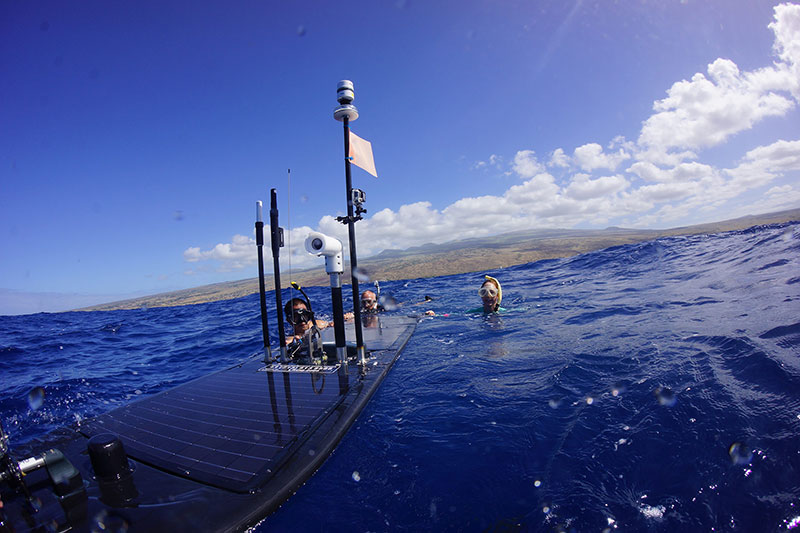
News
Oceanic Drones are Gathering Data About Hawaii’s Kilauea Volcano Lava Flow
Hawaii’s Kilauea volcano has been steadily pouring lava into the sea for a good 6 months or so now, and scientists working for the the University of Hawai’i at Hilo, Massachusetts Institute of Technology (MIT), and the U.S. Geological Survey’s Hawaiian Volcano Observatory (USGS-HVO) have now decided to deploy oceanic drones to take a closer look.
Understanding how lava flows into the ocean and affects the oceanic environment surrounding it will enable scientists to better understand the impact of the volcano on the ocean.
Up until recent times, getting this sort of information has been fraught with danger as the intense heat and steam presents considerable risks to manned ocean-going vessels – as can bee seen in footage released by the Wall Street Journal in February.
Now, using unmanned sea surface drones developed by Liquid Robotics, the researchers are taking advantage of a rare opportunity to understand the lava flow’s interaction with the ocean more deeply.
Carrying a multitude of sensors able to gather rarely measured data from above and below the sea surface as well as in the air around it, the ‘Wave Gliders‘ will zigzag back and forth the area around the lava flow for the next three weeks.
Working with the researchers, the Wave Gliders will continuously capture gather data and imagery regarding water temperatures, oxygen levels, pH levels, salinity, and turbidity, to conductivity and underwater acoustics.
The continuous propulsion of the Wave Gliders is made possible by the conversion of wave and solar energy.
“The effect of this massive lava flow entering the ocean is dramatic and amazing, but at the same time somewhat mysterious,” said Roger Hine, CTO and co-founder of Liquid Robotics. “Detailed measurements of the ocean plume and the ecosystems it impacts are now possible and safe to obtain with unmanned systems like our Wave Gliders. This is an opportunity of a lifetime to deploy our ocean robots to help advance science.”
Using the unmanned technology, the researchers hope to find out things like how deep the lava plume extends down to the ocean floor, and how it changes the ocean conditions.
“The plume of hot, sediment-laden water generated by the lava flowing into the ocean spreads out, impacting surrounding ecosystems and permitted boaters operating in the area,” said Dr. Steve Colbert, University of Hawai’i at Hilo.
“We don’t know how far and how deep that plume extends, or how it changes with oceanographic conditions or changes in the flow of lava. The Wave Gliders provide us the opportunity to answer these important questions.”
Impacts upon marine life including the coral reefs and their inhabitants will also be studied, as well as the impact on air quality for those living on land.




















